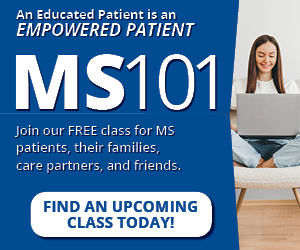Something that’s often overlooked in talking about living with MS is the environment you live in – and specifically, what you can do to make things a little bit easier. This can mean making changes to your physical surroundings, making things more accessible, and setting reasonable boundaries for yourself and others. It can also mean making sure that environments outside your control – public places like shops, malls, parks and airports – are going to work for your needs.
Here we’ll explore these areas in detail, and hopefully provide some practical guidance to help ease and enhance your overall wellness.
Physical Environment Adjustments
Making changes to the physical environment can make it easier for people with MS to move around and do things. Here are some things that can help:
- Clearing paths and removing things that might be in the way, especially in busy areas.
- Adding bars to hold onto in places where you need support, like in the bathroom or on stairs.
- Using special equipment, like tools to help with walking or devices that make it easier to do things on your own, including specialized kitchen tools
- Making sure there is good lighting in the home so you can see well, especially at night.
Some of these seem like simple adjustments, but for various real-life reasons, they may not be reasonable for everyone. It’s important to think about what you can do and how you can make things easier, and keep that all in alignment with your current physical needs.
It’s also important to speak up and make sure your family, loved ones and friends know what you might need and how they can help. Remember that these folks are on your side, and most of them will want to help – but they can’t know how to help unless you tell them.
Accessibility Considerations
Accessibility modifications can greatly enhance the daily lives of people living with MS, if and when they become necessary. Many people won’t need such accommodations, but others will at some point in their lives – it’s important to be realistic and honest with yourself about when to begin implementing things that will make your life a little bit easier.
Some measures to promote accessibility include:
- Installing ramps or lifts to facilitate entry and exit from the home.
- Widening doorways and hallways to accommodate mobility aids and wheelchairs.
- Adapting kitchen and bathroom areas to be wheelchair accessible, including lower countertops, roll-in showers, and grab bars.
- Considering modifications to vehicles to enable easier transportation.
Many companies and organizations can assist with various aspects of making your home more accessible. A good place to start is to check with your local city or county public health department for what resources they can offer, or where they might be able to refer you to find more assistance.
Out in Public
So far we’ve addressed what you can do to ensure your environment works for you and your needs. But often, we find ourselves in places where we don’t have that level of control. While the Americans with Disabilities Act addresses some of these concerns, it’s not always adhered to in ways that are beneficial to everyone’s needs.
There are several strategies you can build in to your plans to ensure your needs are going to be met, including:
- Research Online: Check the website of the public place you plan to visit. Many establishments provide accessibility information, such as the availability of ramps, elevators, accessible parking, and accessible restrooms. Google listings for many establishments contain user-uploaded photos that can give you a good idea of what accessibility features may be present.
- Contact the Establishment: Reach out directly via phone or email. Inquire about their accessibility features, such as ramps, elevators, accessible seating, and any special accommodations you may need.
- Accessibility Resources: Consult online accessibility directories or resources that provide information on accessible places in your area. These resources often provide user reviews and ratings regarding accessibility features and experiences.
- Seek Recommendations: Reach out to local advocacy organizations or online communities focused on accessibility issues. They can provide valuable insights and recommendations based on their experiences visiting different public places.
Finally, it’s never a bad idea to have a “Plan B.” Despite anything you may do in advance, when you’re in a public place or anywhere you don’t have direct control of the environment, things may not go as smoothly as you’d like. Having your own means of adapting or getting help, communicating that with who needs to know, and ensuring you have options should always be part of your planning.






